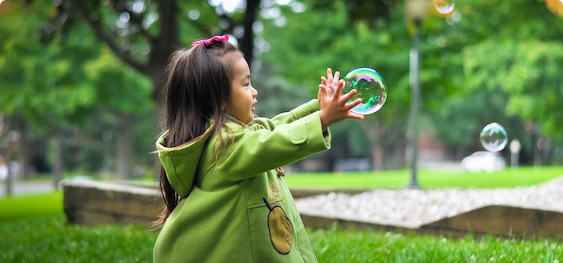Positive Discipline
Positive Discipline is based on the works of Alfred Adler, Rudolf Drykers, Jane Nelson and Lynn Lott.
Five Criteria For Effective Discipline
- Helps children feel a sense of connection.
- Is mutually respectful and encouraging.
- Is effective long - term.
- Teaches important social and life skills.
- Invites children to discover how capable they are.
Positive Discipline Tools
The Positive Discipline Parenting and Classroom Management models are aimed at developing mutually respectful relationships. Positive Discipline teaches adults to employ kindness and firmness at the same time, and is neither punitive nor permissive. The tools and concepts of Positive Discipline include:
- Mutual respect. Adults model firmness by respecting themselves and the needs of the situation, and kindness by respecting the needs of the child.
- Identifying the belief behind the behavior. Effective discipline recognizes the reasons kids do what they do and works to change those beliefs, rather than merely attempting to change behavior.
- Effective communication and problem solving skills.
- Discipline that teaches (and is neither permissive nor punitive).
- Focusing on solutions instead of punishment.
- Encouragement (instead of praise). Encouragement notices effort and improvement, not just success, and builds long-term self-esteem and empowerment.
Some Unique Characteristics of the Positive Discipline Model include:
- Teaching adults and students through experiential activities. Creating opportunity to practice new skills and to have fun learning by doing.
- Classroom discipline programs and parent education programs that are consistent. Parents, teachers, and childcare providers can work together to provide a secure, consistent environment for children.
- Inexpensive training and ongoing support so members of communities can teach each other Positive Discipline skills.
- Certified trainers across the world who can work with schools and communities.
A History of Positive Discipline
The Positive Discipline Parenting and Classroom Management Model is based on the work of Alfred Adler and Rudolf Dreikurs. Dr. Adler first introduced the idea of parenting education to United States audiences in the 1920s. He advocated treating children respectfully, but also argued that spoiling and pampering children was not encouraging to them and resulted in social and behavioral problems. The classroom techniques, which were initially introduced in Vienna in the early 1920s, were brought to the United States by Dr. Dreikurs in the late 1930s. Dreikurs and Adler refer to the kind and firm approach to teaching and parenting as “democratic.”
In the 1980s, Lynn Lott and Jane Nelsen attended a workshop facilitated by John Taylor. Lynn began training interns to teach experientially and wrote (with the help of her interns) the first Teaching Parenting Manual. Jane was the director of Project ACCEPT (Adlerian Counseling Concepts for Encouraging Parents and Teachers), a federally funded project that had received exemplary status while in its developmental phase. Jane wrote and self-published the book, Positive Discipline, in 1981. It was published by Ballantine in 1987. In 1988, Jane and Lynn decided to collaborate on the book which is now titled, Positive Discipline for Teenagers, and began to teach parenting and classroom management skills experientially. Lynn and Jane also wrote Positive Discipline in the Classroom and developed a manual filled with experiential activities for teachers and their students.
In the years since, the Positive Discipline series has grown to include titles that address different age groups, family settings, and special situations. Positive Discipline is taught to schools, parents, and parent educators by Certified Positive Discipline Trainers. Community members, parents, and teachers are encouraged to become trained facilitators and to share the concepts of Positive Discipline with their own groups.
Positive Discipline parent education classes are taught across the world, and Positive Discipline is successfully used as the classroom management model in private, religious, and public elementary schools. A demonstration school program was developed and is steadily expanding.


